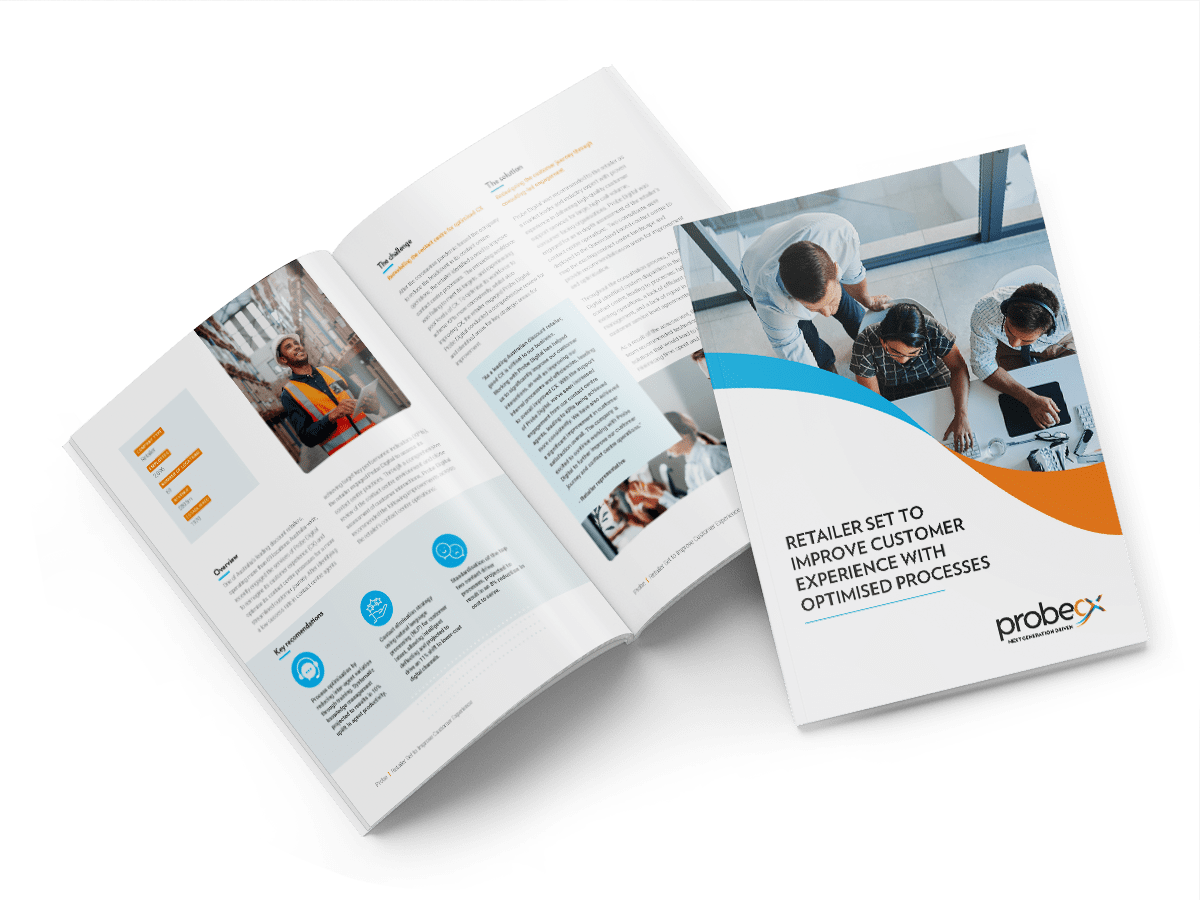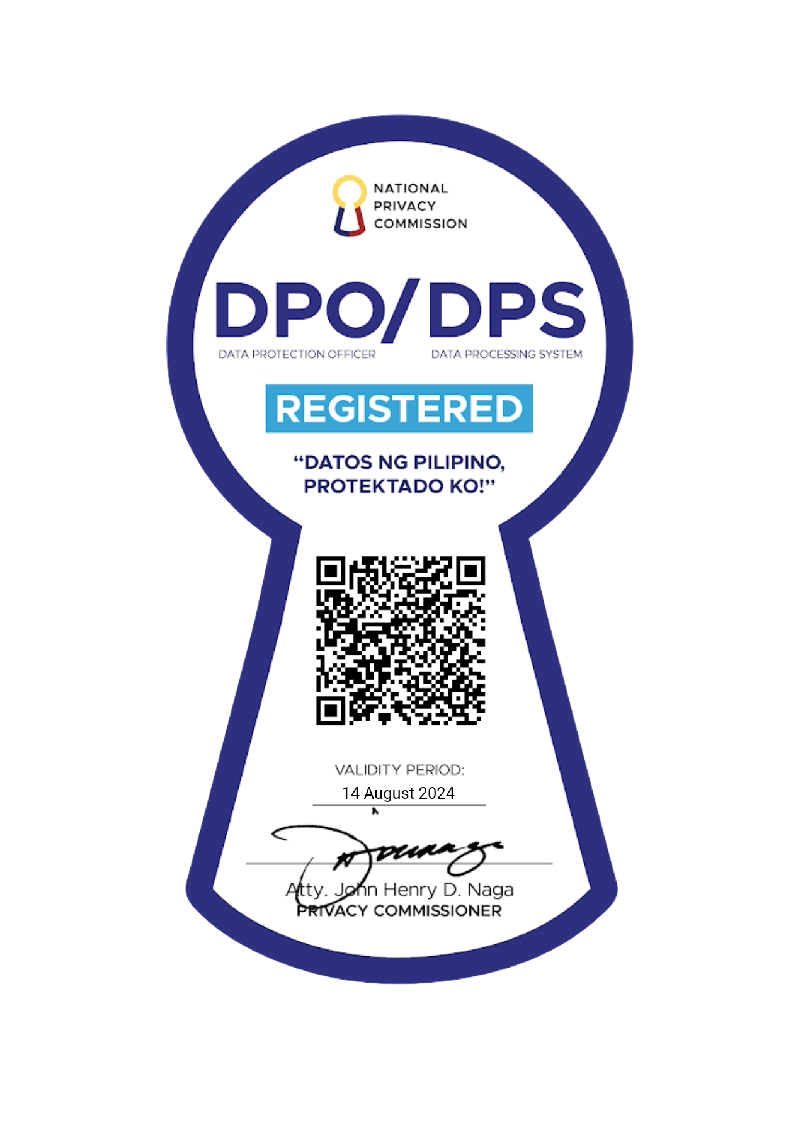-
About Us
Probe CX is a tech-powered, global customer experience organisation that amplifies human capabilities with technological excellence.
-
Vision and Culture
We help our clients become modern digital organisations by combining the latest technology with people, process and data.
-
Executive Team
Meet the team with unmatched experience committed to helping organisations create environments for digitally-enabled CX to thrive.
-
Compliance
Industry-recognised certifications to protect what matters most to our clients and their customers.
-
Locations
Over 19,000 team members delivering exceptional customer experiences across five countries.
-
Reasons to choose Probe CX
The top nine reasons to get more closely acquainted with Probe CX.
TECHNOLOGY & TRANSFORMATION SERVICES
 Creating exceptional customer experiences by 'doing it better'
Creating exceptional customer experiences by 'doing it better'
Optimise your customer experience by designing, deploying and managing digital solutions customised to your unique needs.
Continue reading- Blog
- Transactional vs relationship NPS
Transactional vs relationship NPS

Yes indeed - happy customers are good for business.
The challenge for business leaders is knowing what customers are feeling. It’s all well and good to sense they are happy or get a vibe that a transaction left them feeling underwhelmed, but such abstract thoughts do not easily transfer to definitive action. Quantifying the customer experience is critical and that is where Fred Reichheld and his Net Promoter Score (NPS) come into their own.
First developed by the business strategist in 1993, NPS is a widely used market research metric that helps predict customer purchase and referral behaviour. Typically taking the form of a single survey question, the most famous version asks respondents to rate the likelihood they would recommend a company, product or service to a friend or colleague.
Simple to calculate and highly effective, NPS has rightly earned its place in the modern business world, with two-thirds of Fortune 1000 companies in 2020 using versions of the metric. What is less definitive is the best time to capture such customer feedback – on a regular basis (eg: bi-annually) or after a specific event (eg: post-sale). Both have pros and cons and both have a specific name – Transactional NPS and Relationship NPS.
The key is deciding which method will work best for your business as that choice will make a huge difference in reaching your customer loyalty goal.
What is Transactional NPS?
As the name suggests, a Transactional NPS is based on a specific transaction with an organisation. Rather than asking a customer how likely they would be to recommend the business in general, they are asked for their opinions based on the interaction that has just unfolded. With direct feedback about specific issues, Transactional NPS can help find – and fix - pain points in the customer journey.
What is Relationship NPS?
Relationship NPS surveys occur at regular intervals and assess a customer’s overall satisfaction with an organisation. Also known as on-demand or regular NPS, they do not mention specific purchases or events, instead favouring general questions such as How likely are you to recommend us to a colleague or client on a scale of 0 to 10?
When Should You Use Transactional NPS?
Transactional NPS surveys are ideal for identifying a business’s strengths or weaknesses in specific customer experiences and interactions. Using them at the right time can provide insights into how satisfied and loyal customers are after interacting with a brand while the experience is still fresh in their minds, thus offering an accurate and honest opinion. Common types of Transactional NPS surveys include:
- Post-Purchase
- Post-Customer Service Calls
- Post-Product Use (eg: a week after purchase)
- New Customer Onboarding
- In-Store Experience
- Website User Feedback.
When Should You Use Relationship NPS?
Relationship NPS surveys are conducted periodically to allow customers enough time to deliver considered feedback about their relationship with a business. By issuing the survey at regular intervals (eg: weekly, monthly, yearly), organisations can measure the overall satisfaction that a customer has with using a product or service over a prolonged period. Examples include:
- Three months after acquiring a gym membership
- Six months after buying an online subscription
- Annually as part of an insurance policy renewal.
Benefits of Transactional Feedback
Having identified when a Transactional NPS survey might be used, it’s now time to consider the benefits of doing so.
- Get Real-Time Opinions: the ability to gauge a customer’s immediate perception of a specific process is a valuable tool. Rather than relying on general impressions, organisations can find out exactly how customers feel in the moments after a transaction has unfolded and, in turn, identify opportunities and ensure prompt action to leverage off them.
- Find Specific Concerns: an NPS score is only useful if one can identify the reasons it is soaring – or being dragged down. Transactional NPS surveys take the guesswork out of what is driving customers dissatisfaction by helping pinpoint specific pain points in the customer journey.
- Discover Reasons for Loyalty: knowing what makes customers satisfied with a business allows managers and employees to create even more exceptional customer experiences by targeting what they value. Asking respondents to immediately rate a product or service in terms of price, value or ease of access can identify key drivers for loyalty and help them be replicated in other areas.
- Inspire Staff: it is hard for employees to dismiss Transactional feedback given its link to specific interactions or transactions. Asking customers to rate their experiences within moments of them unfolding is a powerful way of showing staff when they are delivering the goods – and highlighting the areas where they may need to improve.
Benefits of Relationship Feedback
Periodically asking customers how they feel about your organisation overall is a simple way of getting a high-level view of their satisfaction and loyalty. Benefits of Relationship NPS include:
- It allows companies to discover the overall perception of their organisation.
- Data can be compared at regular periods (eg: year-on-year) to identify improvements or declines in customer satisfaction or loyalty.
- Industry NPS standards means results, in many circumstances, can be used to benchmark companies against competitors.
- By using a birds-eye view of customer relationships, Relationship NPS surveys can help instigate long-term changes that boost loyalty and convert passive customers into promoters.
The Decision – Transactional vs Relationship NPS
Given they serve different purposes, businesses should adopt a strategy that incorporates both Transactional and Relationship NPS. Winning customer loyalty is pivotal to the growth of any organisation and the insights to be gained from surveying customers both periodically and in the immediate aftermath of interactions allow executives and managers to identify what is working and how to improve on the processes that are not.
For expert insights into what good Customer Experience looks like, check out this compelling blog about The Ultimate list of Customer Service Statistics.
Related Articles
Shared Services
4 challenges for building customer connection in the CX world
Delivering positive customer experience is the key to modern business success but what should you do when obstacles get in the way?
Intelligent Automation
What contact centres in 2028 could look like with Generative AI
Discover a world where technology is helping change the customer experience conversation for contact centre managers, agents and callers.
Shared Services
4 ways to manage overflow
Top overflow solutions to help improve your overall customer experience in times of peak demand.
© Copyright 2024 Probe CX | All Rights Reserved
Privacy Policy | Financial Hardship Policy | Whistleblower Policy | Complaints Procedure | Supplier Code of Conduct | Make a Payment | Client Login





